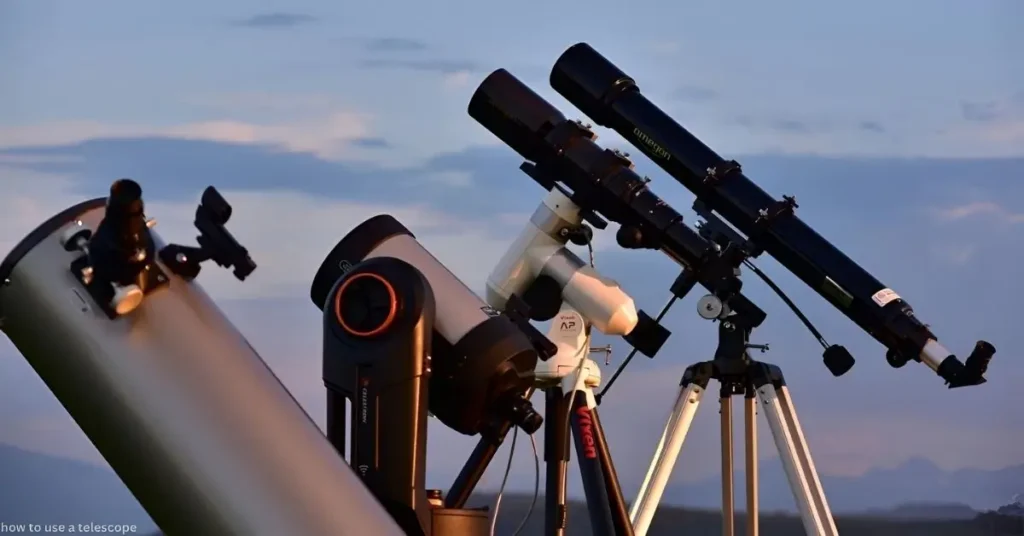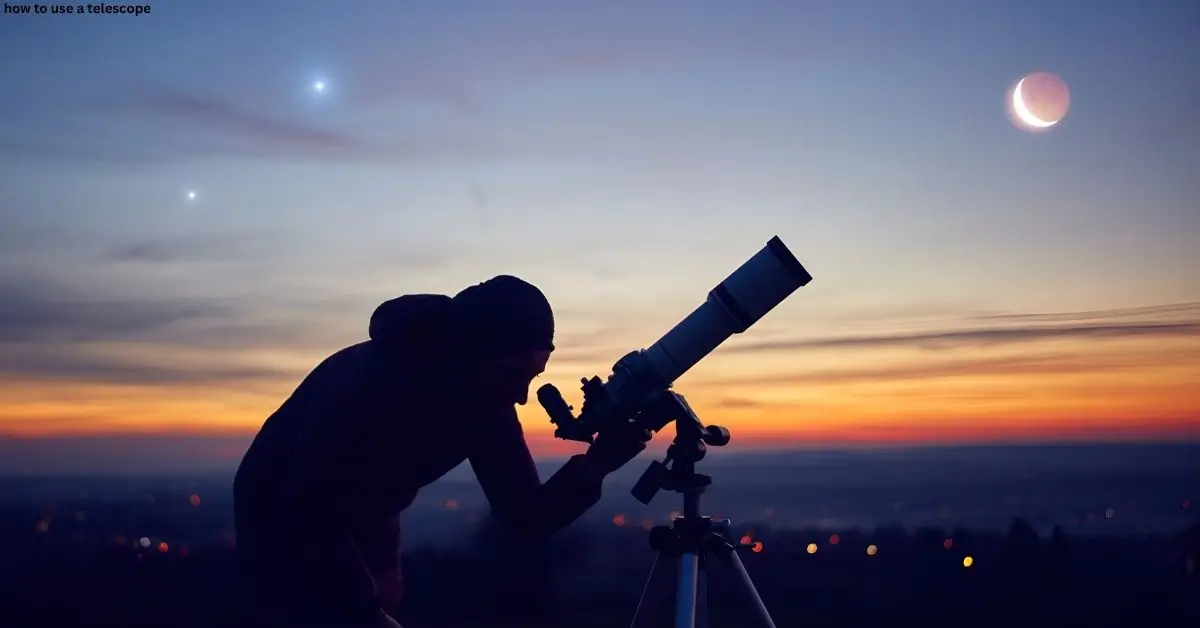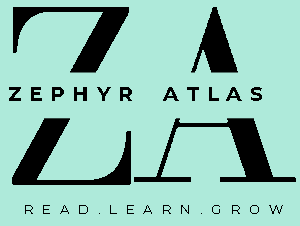Common Queries
Q1: How to use a telescope to find stars and constellations easily
To find stars and constellations, start with a low-power eyepiece, use a star map or app for direction, and slowly move the telescope while keeping the finder scope aligned.
Q2: What eyepiece should I use first?
Begin with the largest eyepiece (lowest magnification) for easier tracking and wider view
Q3: Can I use a telescope through a window?
No, glass distorts images and prevents proper focus. Always observe outdoors.
Q4: Why is everything upside down in my telescope?
Reflector and refractor optics invert images naturally, it’s normal and harmless.
Q5: How do I clean the lenses safely?
Use a soft brush, lens blower, and microfiber cloth. Never touch optics with fingers.
Q6: How do I find stars with my telescope?
Start with bright stars or planets visible to the naked eye, then use your finder scope to center them.
Table of Contents
Introduction
Learning how to use a telescope starts with one truth, clarity comes from control, not cost. Even a modest scope can reveal Saturn’s rings or lunar craters when it’s properly aligned, focused, and stabilized.
Truth is, most beginners struggle not with the stars, but with setup. So let’s fix that.
Unlock More Insights
Quick Answer
Follow this practical, step-by-step guide to master how to use a telescope and get clear views fast.
1. Set Up Your Equipment: Place your telescope on a stable, level surface and secure all parts.
2. Level the Tripod: Adjust the legs evenly so your mount stays balanced during observation.
3. Align the Finder Scope: In daylight, center a distant object in both the main scope and finder scope.
4. Select an Eyepiece: Start with the lowest power (25–30 mm) for a wider, easier view.
5. Locate a Celestial Object: Use the finder scope or an astronomy app to aim at the Moon or a bright planet.
6. Focus the Telescope: Slowly turn the focus knob until stars appear sharp and clear.
7. Observe Steadily: Keep hands off the tube; let the mount do the work for vibration-free viewing.
8. Adjust Magnification: Once centered, switch to a higher-power eyepiece for detailed observation.
Understanding How a Telescope Works
A telescope works by gathering light through a lens or mirror and focusing it into your eye. The larger the aperture, the more light you collect meaning brighter, sharper images. Think of the aperture as the window size and the focal length as how far the view travels inside.
If you are keen to explore the sky quick and hate reading long content then I highly recommend watching:
→”How To Use Any Telescope: From Setup To Stargazing?“
Choosing the Right Telescope for Beginners

When you’re learning how to use a telescope, start with something simple. Refractors are great for planets and the Moon. Reflectors excel at deep-sky objects like nebulae. Dobsonian mounts are the easiest to handle for beginners.
Truth is, overbuying leads to underuse. A 70 mm refractor with a sturdy tripod often outperforms a large but shaky scope.
Setting Up Your Telescope the Right Way
Set your telescope on solid ground. Extend tripod legs evenly and lock them tight. Attach the optical tube securely, ensuring balance before pointing upward.
Use a bubble level if you can, stability is the foundation of precision. Wind or vibration? Move to a calmer surface. The more stable your base, the less blur you’ll see.
If reading feels like a hassle, this video will walk you through everything visually, simple, clear, and perfect for beginners:
→“How To Use a Beginner Telescope?“
Aligning the Finder Scope
Before stargazing, align your finder scope in daylight. Aim the main telescope at a distant object (like a tower or tree). Then, center that same object in your finder’s crosshair.
This saves you hours at night. Every seasoned astronomer knows proper alignment separates frustration from fascination.
How to Focus a Telescope for a Clear View?

Focus by turning the adjustment knob slowly until the image sharpens. Start with a low-power eyepiece (25 mm or higher).
If stars look like fuzzy blobs, keep fine-tuning until they shrink into tiny pinpoints. For high-detail views of planets, switch to a higher-power eyepiece once clarity is achieved.
Understanding Telescope Magnification
Magnification equals focal length ÷ eyepiece size. For example, a 700 mm focal length with a 25 mm eyepiece gives 28× magnification.
Too much magnification causes dim, shaky images. It’s better to have a stable, crisp view than a magnified blur. Truth is, restraint wins in astronomy.
How to Use a Telescope to Find Planets?

Start by finding bright, easy targets the Moon, Jupiter, and Saturn. Use star charts or apps like SkySafari or Star Walk 2. Align your finder scope, locate the bright object, and adjust slowly using both hands.
Jupiter’s moons appear as tiny dots; Saturn’s rings glow at moderate magnification. You’ll feel like you’re touching the cosmos.
If you’re learning how to use a telescope for the first time, this beginner video breaks down every step visually and clearly:
→“How To Use A Beginner Telescope? Astronomy Challenge #22“
Common Mistakes Beginners Make
Most people fail by skipping daylight practice, ignoring cooldown time, or using high power too soon. Others forget to check local light pollution.
Truth is, discipline beats enthusiasm here. Practice under safe, open skies never point near the Sun unless your telescope has a certified solar filter.
Cleaning and Caring for Your Telescope

Keep lenses capped when not in use. Clean optics only when necessary using lens paper and a blower, never your breath or sleeve. Store your telescope indoors to avoid moisture and dust buildup.
Maintenance isn’t glamorous, but it’s what separates professionals from casual observers.
Wrapping Up
Learning how to use a telescope is more about patience than power. Once you master setup, alignment, and focus, the sky stops being distant, it becomes personal.
Truth is, the universe was always within reach. You just needed the right viewfinder.
Sources
- NASA: Beginner’s Guide to Telescopes
- BBC Sky at Night Magazine: How to Use a Telescope?
- Royal Astronomical Society of Canada (RASC): Telescope Basics
- Space.com: Telescope Setup and Stargazing Guides
- Scientific American: Night Sky Observation Articles
Author Bio
Liam Ardent is a Astronomy Enthusiast & Telescope Reviewer with 8 Years of Stargazing Experience. Liam simplifies astronomy for beginners, turning technical telescope jargon into clear, step-by-step learning that empowers anyone to explore the night sky.












